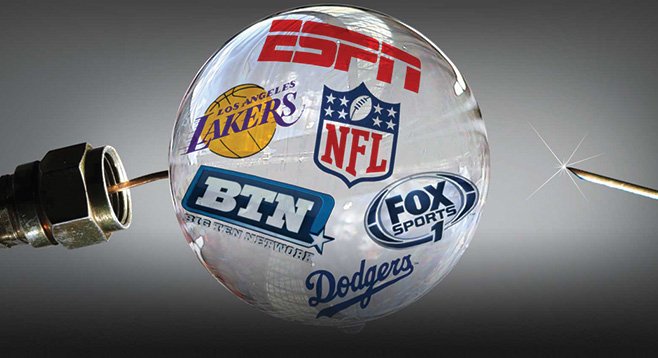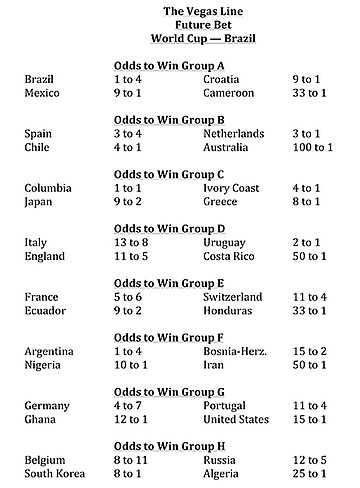 Facebook
Facebook
 X
X
 Instagram
Instagram
 TikTok
TikTok
 Youtube
Youtube

Everybody loves to count money, theirs and other people’s. Regard the $2 billion offered for the recently above-average L.A. Clippers. Donald Sterling may be a demented racist (maybe not), but the man knows how to stand outside when it’s raining money.
Still, $2 billion for a 15-man basketball team that is a secondary tenant on a rented basketball court. Two billion bucks for a franchise Forbes valued at $575 million six months ago. That kind of a jump in value is beyond paying ransom in order to get Sterling to quit the NBA, beyond a $20 billion billionaire not caring what he pays because he wants that thing; what this is is an old-fashioned financial bubble, in this case, a sports bubble.
The Nielsen Company reports that, in 2013, “...over 33 billion hours of national sports programming were consumed by 255 million people in the U.S., up 27 percent from the 26 billion hours consumed in 2003.” That’s serious couch time and a frightening sentence to read.
Even in the middle of a bubble, even at the end of a bubble, experts will tell you there is no bubble or, god forbid, if there has to be a bubble, that bubble is a long, long way off, many mountains to climb first, don’t worry about it, let’s have dinner out.
Remember the dot-com bubble of 1995 to 2000? The U.S. housing bubble of 2001 to 2006? Seemed like good times would never end. Here’s an infallible guide to a bubble: (1) it takes no special skills to play; (2) the outrageous profit you make has no relationship to the effort you put in; (3) the wait until profit comes home is magically short.
Doesn’t take a special skill to buy a tech stock, wait a month, or maybe later that day, and sell. Or, do nothing, literally do nothing: don’t leave the house and refinance your mortgage by phone. It’s free money, because your house has already appreciated more than the amount of your new loan. Let’s do it again!
As to the sports bubble, quoting from an ESPN.com article published last year, “By the old measures — attendance, local growth potential, national growth potential — the bubble most likely would have burst years ago. Since 2007, all of the four major North American team sports have seen attendance drop or remain generally flat. The NFL and NBA have seen attendance fluctuate very little (not counting the drop off caused by the NBA’s lockout-shortened season), while MLB’s attendance dropped by 4 million since 2007, and the NHL’s attendance by 1 million (after a spike in 2011).”

Enter cable TV. The L.A. Dodgers sold for $2.15 billion in March 2012; nine months later, Time Warner Cable agrees to pay $8.35 billion, over 25 years, for Dodgers broadcast rights. L.A. Angels get a $3 billion, 20-year deal with Fox Sports West. Ditto $3 billion, 20-year cable-TV deal for the Texas Rangers. L.A. Lakers, $5 billion, 25 years with Time Warner Cable. Even the deliberately inept Houston Astros got a $3.2 billion, 20-year deal with a cable network. This, for the worst team in baseball, a team fielding a 25-man roster with a payroll that at one point last season, according to the Houston Chronicle, was under $13 million. For contrast, the Dodgers sported a 2014 opening-day payroll of $235 million. And while we’re here, by the end of last season, Houston was the most profitable team in baseball history.
If you want to watch cable TV for, pretty much, anything more than what you can get over the air for free, you’ll have to pay for ESPN. Mighty ESPN is getting about $6 per subscriber per month. While you’re handing out money, be cheered knowing you’ll likely be donating to ESPN2, NBCSN, FS1, CBSSN, and the rest. Don’t like sports? Follows is a bitter, bitter truth: cable companies don’t care what you like.
Cable companies are happy to pass the six bucks on to you, maybe add a little something for their trouble. ESPN is paying close to $2 billion a year for broadcast rights to Monday Night Football. Not a problem — their per-subscriber fee is scheduled to reach $7 per month in three years. Team owners love the sports bubble, love watching the value of their franchise quadruple in value. Players love the bubble, too. Follows are the top five MLB contracts, counted in total value, according to Baseball Prospectus: Alex Rodriguez, $275 million; Miguel Cabrera, $248 million; Albert Pujols, $240 million; Robinson Cano, $240 million; Joey Votto, $225 million. Hey, sports-bubble partygoers will take our money for as long as we’ll give it up.
The party goes on. Until it stops.


Everybody loves to count money, theirs and other people’s. Regard the $2 billion offered for the recently above-average L.A. Clippers. Donald Sterling may be a demented racist (maybe not), but the man knows how to stand outside when it’s raining money.
Still, $2 billion for a 15-man basketball team that is a secondary tenant on a rented basketball court. Two billion bucks for a franchise Forbes valued at $575 million six months ago. That kind of a jump in value is beyond paying ransom in order to get Sterling to quit the NBA, beyond a $20 billion billionaire not caring what he pays because he wants that thing; what this is is an old-fashioned financial bubble, in this case, a sports bubble.
The Nielsen Company reports that, in 2013, “...over 33 billion hours of national sports programming were consumed by 255 million people in the U.S., up 27 percent from the 26 billion hours consumed in 2003.” That’s serious couch time and a frightening sentence to read.
Even in the middle of a bubble, even at the end of a bubble, experts will tell you there is no bubble or, god forbid, if there has to be a bubble, that bubble is a long, long way off, many mountains to climb first, don’t worry about it, let’s have dinner out.
Remember the dot-com bubble of 1995 to 2000? The U.S. housing bubble of 2001 to 2006? Seemed like good times would never end. Here’s an infallible guide to a bubble: (1) it takes no special skills to play; (2) the outrageous profit you make has no relationship to the effort you put in; (3) the wait until profit comes home is magically short.
Doesn’t take a special skill to buy a tech stock, wait a month, or maybe later that day, and sell. Or, do nothing, literally do nothing: don’t leave the house and refinance your mortgage by phone. It’s free money, because your house has already appreciated more than the amount of your new loan. Let’s do it again!
As to the sports bubble, quoting from an ESPN.com article published last year, “By the old measures — attendance, local growth potential, national growth potential — the bubble most likely would have burst years ago. Since 2007, all of the four major North American team sports have seen attendance drop or remain generally flat. The NFL and NBA have seen attendance fluctuate very little (not counting the drop off caused by the NBA’s lockout-shortened season), while MLB’s attendance dropped by 4 million since 2007, and the NHL’s attendance by 1 million (after a spike in 2011).”

Enter cable TV. The L.A. Dodgers sold for $2.15 billion in March 2012; nine months later, Time Warner Cable agrees to pay $8.35 billion, over 25 years, for Dodgers broadcast rights. L.A. Angels get a $3 billion, 20-year deal with Fox Sports West. Ditto $3 billion, 20-year cable-TV deal for the Texas Rangers. L.A. Lakers, $5 billion, 25 years with Time Warner Cable. Even the deliberately inept Houston Astros got a $3.2 billion, 20-year deal with a cable network. This, for the worst team in baseball, a team fielding a 25-man roster with a payroll that at one point last season, according to the Houston Chronicle, was under $13 million. For contrast, the Dodgers sported a 2014 opening-day payroll of $235 million. And while we’re here, by the end of last season, Houston was the most profitable team in baseball history.
If you want to watch cable TV for, pretty much, anything more than what you can get over the air for free, you’ll have to pay for ESPN. Mighty ESPN is getting about $6 per subscriber per month. While you’re handing out money, be cheered knowing you’ll likely be donating to ESPN2, NBCSN, FS1, CBSSN, and the rest. Don’t like sports? Follows is a bitter, bitter truth: cable companies don’t care what you like.
Cable companies are happy to pass the six bucks on to you, maybe add a little something for their trouble. ESPN is paying close to $2 billion a year for broadcast rights to Monday Night Football. Not a problem — their per-subscriber fee is scheduled to reach $7 per month in three years. Team owners love the sports bubble, love watching the value of their franchise quadruple in value. Players love the bubble, too. Follows are the top five MLB contracts, counted in total value, according to Baseball Prospectus: Alex Rodriguez, $275 million; Miguel Cabrera, $248 million; Albert Pujols, $240 million; Robinson Cano, $240 million; Joey Votto, $225 million. Hey, sports-bubble partygoers will take our money for as long as we’ll give it up.
The party goes on. Until it stops.
Comments